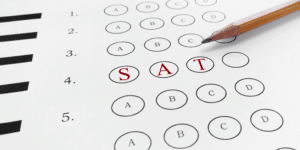The CDC estimates that 1 in 68 American children are born with autism spectrum disorder. If you’re a parent of a child with high-functioning ASD, you may wonder how to get your child the learning supports he or she needs. Hear from expert Jules Csillag about the symptoms, diagnostic process, and educational interventions available to kids and families.
***
If you think your child may have high-functioning Autism Spectrum Disorder, the first step is to recognize the symptoms. Here’s how to do that — and then how to navigate the diagnostic process and advocate for your child.
High-Functioning Autism Spectrum Disorder (ASD)
If you’re new to high-functioning ASD — or if you want an in-depth look at the disability, its diagnosis, and interventions — read on.
Description
As its name suggests, autism falls along a spectrum, meaning that individuals with this diagnosis experience a range of functional skills and impairments. It is categorized as a “pervasive developmental disorder,” which indicates that a person is born with it and that there is no cure. Some autism advocates and activists dislike the use of the word “disorder” and prefer to consider autism as an identity.
Symptoms
Some children with autism — those who are nonverbal or have more severe symptoms, such as repetitive motor movements and behavioral rigidity — receive early intervention services. As a result, they present as being higher-functioning by their preschool years. For others, symptoms of autism spectrum may go unnoticed until their late childhood or teen years. Even as children, however, these individuals will likely have difficulty with social cues and may exhibit symptoms such as:
- Inappropriate eye contact
- Monotone or formal tone of voice
- Difficulty with turn-taking or topic-shifting in conversation
- Difficulty with changes in routines and transitions
- Trouble expanding interests
- Some delays in motor development and trouble with sensory processing
In order to obtain a diagnosis of Autism Spectrum Disorder (ASD), one’s daily life must be functionally affected by these symptoms.
Individuals who are on the autism spectrum but are “high-functioning” — a category formerly referred to as Asperger’s Syndrome — tend to be highly verbal, but can have difficulty with social interactions, organization, and mental flexibility. Paradoxically, many of these individuals also tend to be creative, a trait that requires a great deal of flexibility. (The term learning differences — though not a formal diagnosis — is often preferred because it captures the benefits that accompany the challenges of autism and other disabilities.)
Many of the symptoms of high-functioning ASD have commonalities with non-verbal language disability, and share intervention approaches as well. Children with high-functioning ASD and those with NVLD often share some or all of these characteristics:
- Poor eye contact
- Exhibition of literal thinking
- Difficulty with social situations
- Tendency toward depression and anxiety
- Difficulty with spatial relationships, motor coordination, and changes in routines
Individuals with NVLD, however, tend not to have interests that are extremely limited or focused the way that those with ASD do.
Characteristics
In children, high-functioning ASD is characterized by the following tendencies:
- Difficulty with unstructured times and transitions
- Heavy reliance on routines
- Difficulty with highly stimulating sensory environments, such as settings with loud sounds or bright lights
- Difficulty initiating or maintaining reciprocal conversations
- Difficulty with friendships and social situations (particularly if unstructured)
- Overly focused attention on a limited number of topics
Diagnosis
If you recognize characteristics of high-functioning ASD in your child, here are factors to consider as you seek out a diagnosis.
Diagnostician and Testing
A pediatrician, neurologist, psychologist, or neuropsychologist can diagnose someone with autism spectrum disorder. In fact, a team approach is often taken and may include Occupational Therapists, Speech Language Pathologists, and Special Educators and teachers. An evaluation will include information about family history, developmental milestones, and academic history, as well as tests of intelligence and academic achievement, social skills and pragmatics, or even play. Most assessments also include family and teacher checklists, which aid in the determination of a diagnosis. You can read more about ASD diagnostic tools at the Centers for Disease Control and Prevention website.
Age of Diagnosis
Children can be reliably diagnosed with an autism spectrum disorder by the age of two, although some assessments have been adapted to diagnose children as young as 12 months. While some students with high-functioning autism spectrum disorder will receive a diagnosis and early intervention before they reach school age, many children compensate during their earliest development, and as a result, their conditions go undiagnosed until they enter preschool or elementary school.
Prevalence
It is difficult to determine the percentage of people who have high-functioning ASD versus those who have other forms of the disorder. Since people with an ASD diagnosis fall along a spectrum, there is no clear cutoff for those who might be considered high-functioning. According to the CDC, 1 in 68 children — or 1.5 percent — in the U.S. have been identified as falling on the spectrum. Moreover, boys are five times more likely to be diagnosed with ASD than girls.
The Brain and ASD
Research on ASD has revealed that the neurological areas responsible for visual processing tend to be overactive in individuals with autism, while brain activity between regions occurs with difficulty. Other studies have documented issues with the section of the brain’s nerve cells (called synapses) across which messages travel in order to carry out functions. By studying the brains of children with autism while the children are engaged in activities, researchers have observed weak connections between their neurological synapses.
Other researchers have documented under-activation in the brain’s motor and limbic systems (or emotion-generating centers). This may help explain some of the social-emotional difficulties experienced by many individuals on the autism spectrum.
Recognition of the Positives
Individuals with autism tend to have areas in which they possess deep strengths (not to be confused with the notion of savants, like the character in “Rain Man”). Animal scientist and autism advocate Temple Grandin describes the unique ways her strong visual skills allow her to experience the world and easily solve problems that neurotypical individuals struggle with.
Because people with high-functioning ASD recognize patterns and are capable of sustaining focus for long periods of time, some businesses encourage or actively recruit these individuals, and then provide the supports they need in the workplace. In turn, these employees apply their strong problem-solving skills, keen focus, excellent memories, and superior verbal skills in professional situations as varied as web development, lab work, and copy editing.
Evidence-Based Interventions
There are several types of interventions that have been shown to help people with high-functioning ASD address the challenges they face.
Organizational Skills Training
As with Attention Deficit Hyperactivity Disorder (ADHD), students on the autism spectrum can have difficulty with organization and executive functions. Organizational Skills Training (OST) has been found to benefit children with high-functioning ASD by teaching them how to develop clear organizational systems that they can use to self-monitor their behavior. As Gallagher, Abikoff, and Spira note in their book on OST, students with ASD “may be unwilling to change responses to organizational situations, even if the current routines are not successful.” Organizational Skills Training is clear, concrete, and motivating for students for whom “school success may not be possible without prior extensive work.”
Social Skills Training
Speech therapists, social workers, and occupational therapists are all specialists who may have been trained to teach social skills to students with high-functioning ASD. These programs make the implicit social rules of our daily lives more explicit. For example, participants may learn:
- How do you initiate a conversation?
- Which topics are off-limits in conversation?
- What makes a good friend?
Social skills training can help individuals with high-functioning ASD meet with greater success in a range of endeavors, from job interviews to summer camps.
Cognitive Behavioral Therapy (CBT)
CBT may also be beneficial for individuals on the autism spectrum. It can reduce anxiety and help individuals function more easily amid the demands of daily living.
TEACCH and DIR/Floortime
There are aspects of the TEACCH and DIR models of intervention that can help individuals with high-functioning autism.
TEACCH: This approach relies on the visual processing strengths of people with ASD to create concrete learning supports for specific settings. It is designed around the individual needs of each student — in contrast to a standardized curriculum — by using visual anchors to help a person understand her environment in predictable ways.
DIR/Floortime: DIR is a play-based intervention for people with an autism disorder that integrates cognitive and psycho-social concepts to support social engagement, increase communication, and develop wider interests. It is founded on learning theory, but integrates emotional and psychological concepts as well, with the goal of helping to further develop the social, relational, and cognitive abilities of people with ASD.
A Final Thought
All aspects of autism spectrum disorders (communication, social behavior, and cognition) fall along a continuum, and some people have more severe symptoms than others. Severity is determined by the evaluator, but it relates to a child’s ability to function as compared to her peers. Students who have non-high-functioning ASD tend to be minimally verbal, have little functional communication, and difficulty with practical life skills and social skills in the absence of support services (such as those provided by Speech Language Pathologists, Physical Therapists, and paraprofessionals). You can modify your home to help a child with ASD who is not high functioning, and use technological tools to ease communication and other challenging activities.
Further Reading
The following outside resources are well-established authorities in the field of dyslexia. You will find in-depth coverage here:
- Asperger’s Rules by Dr. Blythe Grossberg
- Autism Research Institute’s Advice for Parents
- CDC Autism Spectrum Disorders Series
- Engaging Autism by Dr. Stanley Greenspan and Serena Weider
- Tips for Teaching High-Functioning People with Autism
- The Complete Guide to Asperger’s Syndrome by Tony Abbott




